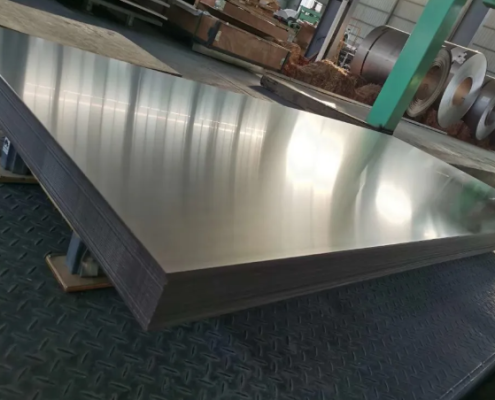Analyze the fine process flow for producing titanium alloy plates
What process is required to produce titanium alloy plates?

As a lightweight, high-strength metal material, titanium alloy is widely used in aerospace, medical equipment, automobile manufacturing, and other fields. The production of titanium alloy plates requires a series of delicate process steps to ensure that the final product has excellent mechanical properties and surface quality. Today, the editor will take you to understand what processes are required to produce titanium alloy plates.
Raw material preparation is the cornerstone of producing titanium alloy plates. High-quality raw materials are the key to ensuring board performance. When selecting raw materials, their chemical composition and impurity content need to be strictly controlled to ensure that the smelted titanium alloy has stable structure and properties. In addition, the shape and size of the raw materials also need to meet the requirements of subsequent processes to facilitate smelting and processing.
Next comes the smelting process. The smelting of titanium alloys needs to be carried out under vacuum or inert gas protection to prevent oxidation and impurity contamination. Melting equipment usually uses vacuum induction melting furnaces or electron beam melting furnaces, which can provide high temperature and high vacuum environments to ensure the purity and uniformity of titanium alloys. During the smelting process, the smelting temperature and time also need to be precisely controlled to obtain the ideal alloy composition and structure.
After the smelting is completed, the titanium alloy enters the casting stage. During the casting process, it is necessary to select the appropriate casting method according to the shape and size of the product, such as sand casting, metal mold casting continuous casting, etc. The casting temperature and cooling rate need to be strictly controlled during the casting process to avoid defects such as cracks and shrinkage cavities.
This is followed by the rolling process. Rolling is a key step in forming titanium alloy plates. During the rolling process, the titanium alloy plate gradually reaches the required thickness and size through technological measures such as multi-pass rolling and intermediate annealing. During the rolling process, the rolling temperature and reduction amount need to be strictly controlled to ensure that the structure and properties of the plate are uniform.
Heat treatment is an important step to improve the performance of titanium alloy plates. Through heat treatment processes such as annealing, quenching, and aging, the residual stress inside the plate can be eliminated and its mechanical properties and corrosion resistance can be improved. During the heat treatment process, parameters such as heating temperature, holding time, and cooling rate need to be precisely controlled to achieve the best heat treatment effect.
Surface treatment is an important part of improving the appearance quality and performance of titanium alloy plates. Common surface treatment methods include mechanical polishing, chemical treatment, and spraying. These treatments can remove scale and stains from the surface of the board and improve its smoothness and corrosion resistance. At the same time, through spraying and other processes, a protective film can also be formed on the surface of the plate to enhance its wear resistance and weather resistance.
The production of titanium alloy plates is a complex process involving multiple links, from raw material preparation to smelting, casting, rolling, heat treatment, and surface treatment. Each link requires strict control of process parameters and operating specifications to ensure the quality and safety of the final product. performance.


